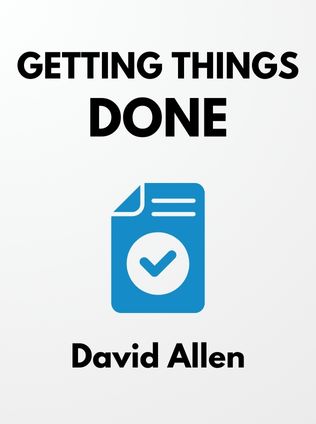
Getting Things Done
The Art of Stress-Free Productivity
By David Allen
Published 01/2001
About the Author
David Allen is a productivity consultant and author renowned for his time management and productivity methodology, Getting Things Done (GTD). With decades of experience in coaching and training individuals and organizations, Allen has developed GTD into a comprehensive system that helps people manage their tasks and projects more effectively. His work emphasizes the importance of mental clarity and organization to achieve productivity and reduce stress.
Main Idea
The core premise of "Getting Things Done" is to store every task, reminder, and note in an external system to free up mental energy for focusing on the task at hand. The GTD methodology is designed to help individuals manage their workload more efficiently, enabling them to be fully present in each moment without the constant nagging feeling of unfinished tasks.
Table of Contents
- Introduction
- Capture
- Clarify
- Organize
- Reflect
- Engage
Capture
The first step in the GTD system is to capture every idea, task, and piece of information. This involves collecting everything that requires your attention into a single location, such as an in-tray or a digital list. The goal is to get these items out of your head and into a trusted system where you can process them later.
"Your mind is for having ideas, not holding them." - David Allen
By capturing everything, you prevent important tasks from slipping through the cracks and reduce the mental clutter that can impede your productivity. Examples of what to capture include:
- Meeting notes
- Upcoming deadlines
- Personal reminders
Clarify
Once you have captured all your tasks and ideas, the next step is to clarify what each item means and what action is required. This involves determining the next physical action needed to move each task forward. For instance, if a task is to "schedule a meeting," the next action might be to check your availability or book a conference room.
"Decide the next action and you won't feel overwhelmed." - David Allen
By clarifying each task, you transform vague ideas into actionable steps, making it easier to tackle them efficiently. The clarification process includes:
- Deciding if the task requires action or can be discarded
- Identifying the next actionable step
- Delegating tasks if necessary
Organize
After clarifying your tasks, you need to organize them into appropriate categories. This step involves sorting tasks into lists, files, and calendars based on their nature and urgency. The GTD system suggests various lists, such as Projects, Next Actions, Waiting For, and Someday/Maybe.
"Your system must be as simple as possible to be effective." - David Allen
Organizing tasks ensures that you can easily find and review them when needed. Examples of organizational categories include:
- Projects list for multi-step tasks
- Reference files for non-actionable information
- Next Actions list for immediate tasks
Reflect
Regular reflection is essential to keep your system current and relevant. This involves reviewing your lists and calendars frequently to ensure that everything is up-to-date and that you are focusing on the right tasks. The Weekly Review is a crucial part of this step, allowing you to clean up your system and make necessary adjustments.
"You can only feel good about what you're not doing when you know what you're not doing." - David Allen
Reflecting helps you stay on top of your commitments and align your daily actions with your long-term goals. Key activities during reflection include:
- Reviewing your Projects and Next Actions lists
- Updating your calendar
- Revisiting your Someday/Maybe list
Engage
The final step is to engage with your tasks, meaning you take action based on your organized lists and priorities. By using the GTD system, you can make informed decisions about what to work on at any given moment, considering factors like context, time available, and energy levels.
"You can only feel comfortable about what you're doing if you know what you're not doing." - David Allen
Engaging effectively requires prioritizing tasks and focusing on those that align with your goals and available resources. Models for choosing tasks include:
- The Four-Criteria Model: Context, time, energy, priority
- The Threefold Model: Predefined work, work that shows up, defining work
- The Six-Level Model: Next Actions, current projects, areas of focus, goals, vision, purpose
Step 1: Capture
The first step is to capture every idea, reminder, and piece of information and get it out of your head. Capture everything—big and small, short-term and long-term, anything in your life that you feel should be different and that you have some motivation or commitment to change (anything from career strategy ideas to a reminder to fix that gadget in your junk drawer).
Sign up for FREE and get access to 1,400+ books summaries.
You May Also Like
The Subtle Art of Not Giving a F*ck
A Counterintuitive Approach to Living a Good Life
By Mark MansonRich Dad Poor Dad
What the Rich Teach Their Kids About Money - That the Poor and Middle Class Do Not!
By Robert T. KiyosakiHow To Win Friends and Influence People
The All-Time Classic Manual Of People Skills
By Dale CarnegieQuiet: The Power of Introverts
The Power of Introverts in a World That Can't Stop Talking
By Susan Cain



















